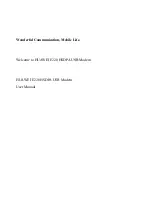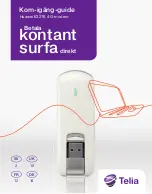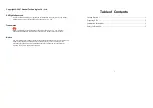
4.2 RS-232 CONNECTION
Because the Model 1110A is designed to behave as either a DCE
or a DTE device, it does not need special cables to operate. Always
use a
straight-through RS-232 cable.
5.0 OPERATION
Once you have configured each Model 1110A properly and
connected the fiber and RS-232 cables, you are ready to operate the
units. This section describes the LED status monitors and the power
up process.
5.1 LED STATUS MONITORS
The Model 1110A features two status LEDs that indicate the
condition of carrier detect and fiber optic output. Figure 8 (below)
shows the back panel location of each LED. Following Figure 8 is a
description of each LED’s function.
•
The “Carrier Detect” LED will glow red when a proper carrier
frequency is recognized.
•
The “Fiber Optic Output” LED will glow red to indicate
presence of infrared output and transmit carrier
5.2 POWER UP
Once the Model 1110A is properly installed, it should operate
transparently—as if it were a standard cable connection. Since
operating power is derived from the RS-232 data and control signals;
there is no “ON/OFF” switch. All data signals from the RS-232
interface are passed straight through.
When the local and remote Model 1110A’s are both powered up
and passing data normally, the following LED conditions will exist:
•
Carrier detect = solid red
•
Fiber optic output = solid red
9
10
Figure 8. Back panel view of the Model 1110
Transmit Fiber
Receive Fiber
LEDs
Carrier Detect
Fiber Optic Output
Notice!
Any terminal cable connected to the Model
1110A must be shielded cable, and the outer shield must
be 360 degree bonded–at both ends–to a metal or
metalized backshell.

























